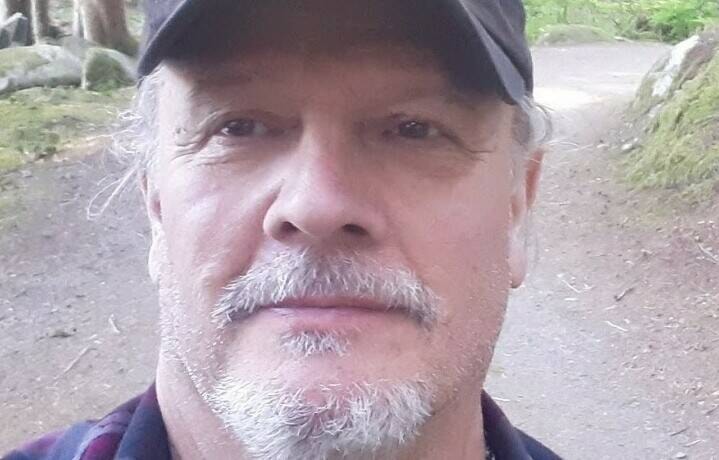My son, Gage, was a heroin addict for over 10 years.
He got hooked when he was living in Ottawa and going to university. He was hit by a guy in a Jeep and broke both legs. As he was healing from his injuries, he was prescribed OxyContin for the pain. I thank God for the doctors, nurses, hospitals and good pain medication. But Gage made some bad choices. My son went from using prescription painkillers to using street drugs. This is part three of Gage’s story.
I comforted myself knowing Gage was a safe user. He was also very functional and worked two jobs. He was never homeless. This was because he was in a methadone program. Every day on his way to work, he stopped at a methadone clinic and took his medicine. This allowed him to function, work and pay his bills. He used the “hard stuff” after hours. I am very grateful for those who operate these programs. They take a “harm reduction” approach. This bought my son time and kept him alive for years.
But then I started to read about the many people who were dying from drug overdoses. There was an “opioid epidemic.” My son was now in the middle of this national tragedy. Opioids include the very powerful and very deadly drug fentanyl. It was in everything. I worried about Gage. I wondered if he could really be safe enough. The drug scene was also being taken over by violent gangs. These younger, gangster “wannabes” didn’t care about anyone. It was time for me to act. I had to intervene. I asked Gage if he wanted to leave Ottawa and come to the NWT. He said yes.
At the time, I was working for the GNWT as the mental health supervisor in Inuvik. The opioid crisis was only just starting to hit the North. We were sending many addicts and alcoholics to treatment centres in Alberta, B.C. and Ontario. Going south had its pros and cons. The addicts and alcoholics got away from the drug dealers and bootleggers. It was a break from the community. It was a chance for a new start.
Addicts (or alcoholics) who completed treatment did well. They made new friends and started to deal with the underlying issues. They gained some tools for the hard work of recovery. They found a new start. As they say in 12 step groups, “it works if you work it.” They returned to their communities excited about their new life.
Support necessary
Recovery works but it takes lots of support. Some communities had an Alcoholic Anonymous or Narcotics Anonymous group. Others found support in their church, prayer groups, traditional healing camps, counsellors, Elders, nurses, doctors, etc. It’s all good. Staying connected meant they could continue their journey of recovery.
On the other hand, some who went south did not have a good experience. They got homesick and returned before they finished the program. This is understandable. It’s a very big step to go from Sachs Harbour to Calgary. A small hamlet on the tundra to the big city. Sometimes we had to send people to treatment twice, three or even four times. Our hope was always, “Maybe this time something will click,” and full recovery will start.
Others, who were facing a court case, wanted to go to treatment so they would not go to jail. They would check out of the program after a couple of days and head for the streets. There, they met friends and other addicts. Things went from bad to worse. They did not “fall through the cracks.” They jumped into the cracks with both feet. But we all make mistakes. Usually, many mistakes. Addicts make the same mistakes over and over again. I know the pattern because I am a recovered addict.
Addicts eventually lose the power to choose. They become powerless. This is when they really need help, but they have to want the help and be ready. The good news is it’s never too late to get help and change. But the excuses must stop. Gage really wanted help. He was ready to change. Now back to Gage’s story.
My son was true to his word. He finally arrived in Inuvik. Before Gage left the Inuvik airport, he was offered a job by a good friend from the ‘Igloo church.’ Now Gage would have something to do. That’s important in recovery — keeping busy. The people of Inuvik were very caring and they supported Gage all the way.
He camped on my couch. He started work at the local Home Hardware. The owners were supportive. Gage did great and he enjoyed working and living among the local Inuvialuit, Gwich’in, Metis, English, French and settlers from all over the world. I really did not have to worry because the people of the Delta were so welcoming.
Everyone’s journey of recovery is different. For Gage, life was different in Inuvik. It was a fresh start. We went to many community events together. He was in the “honeymoon phase” of recovery. But after four months, Gage was getting homesick. He missed his girlfriend. He told me he was feeling stronger and ready to go home. But four months is not a lot of sober time. I was concerned, to say the least. I did not want to lose my son now that he was so close a full recovery, but I understood about being homesick. Would Gage go back to Ottawa and relapse? Would I ever see my son again?
Stay tuned for part four of Gage’s story.
—Darrell Taylor is a retired mental health professional who has lived in the NWT and Nunavut for 20 years. He is originally from Ontario and is a member of the North Bay/Mattawa Algonquins.
